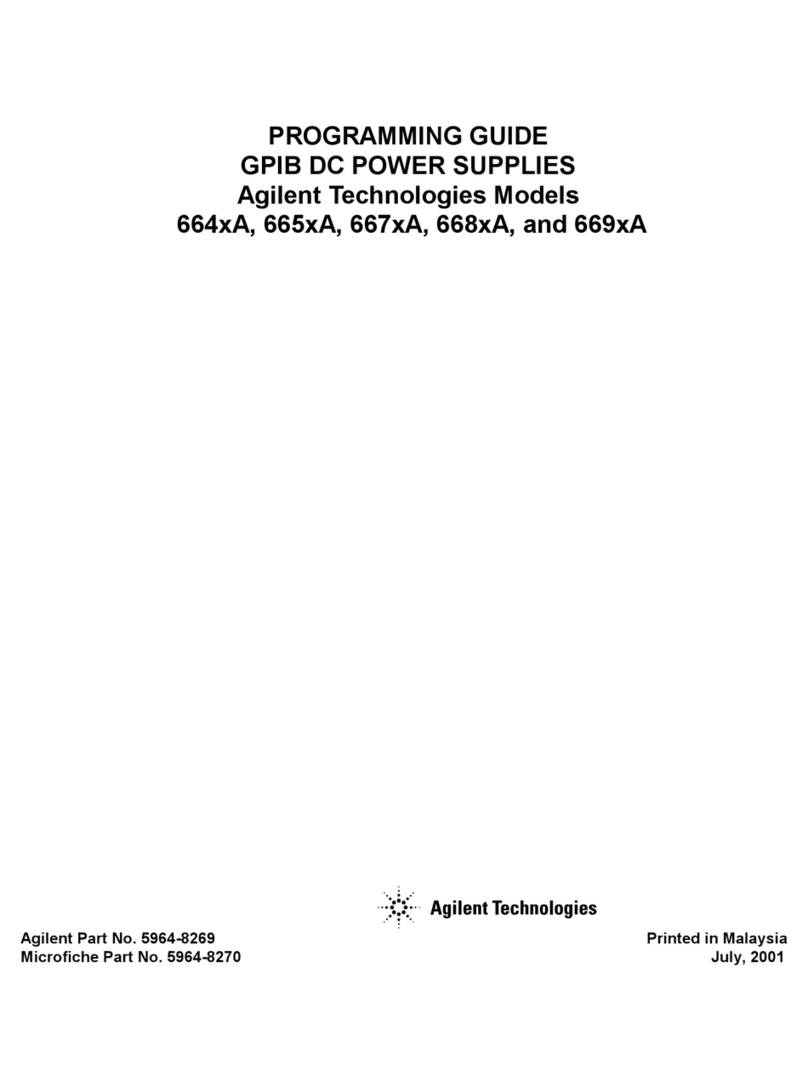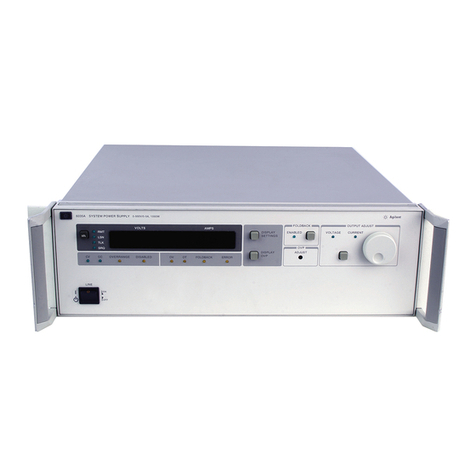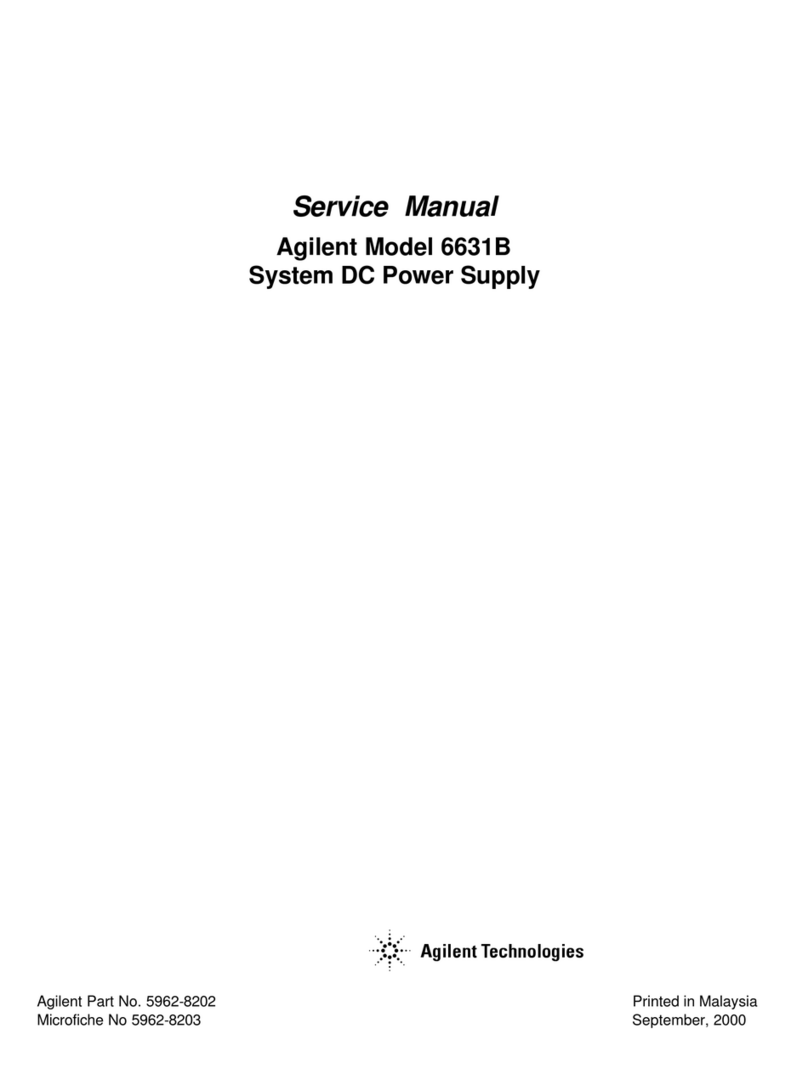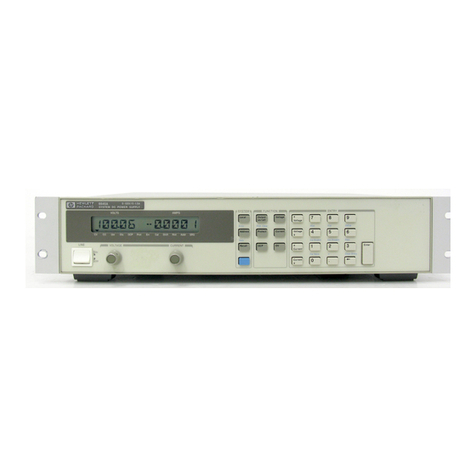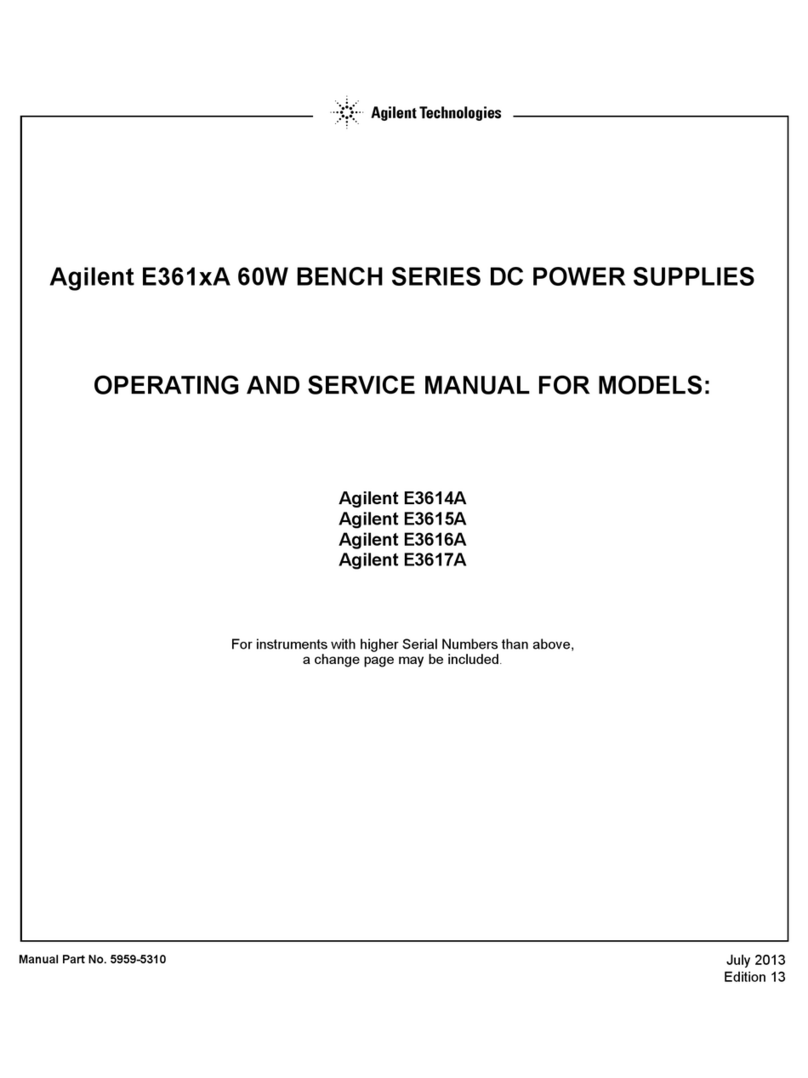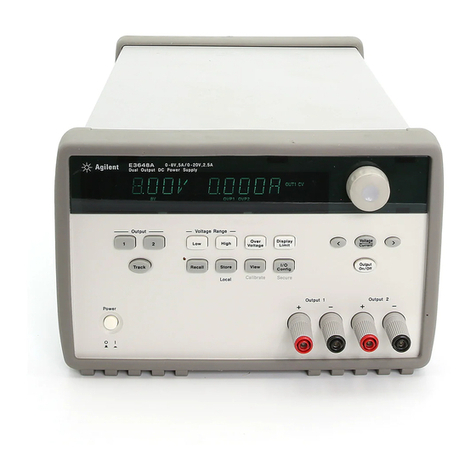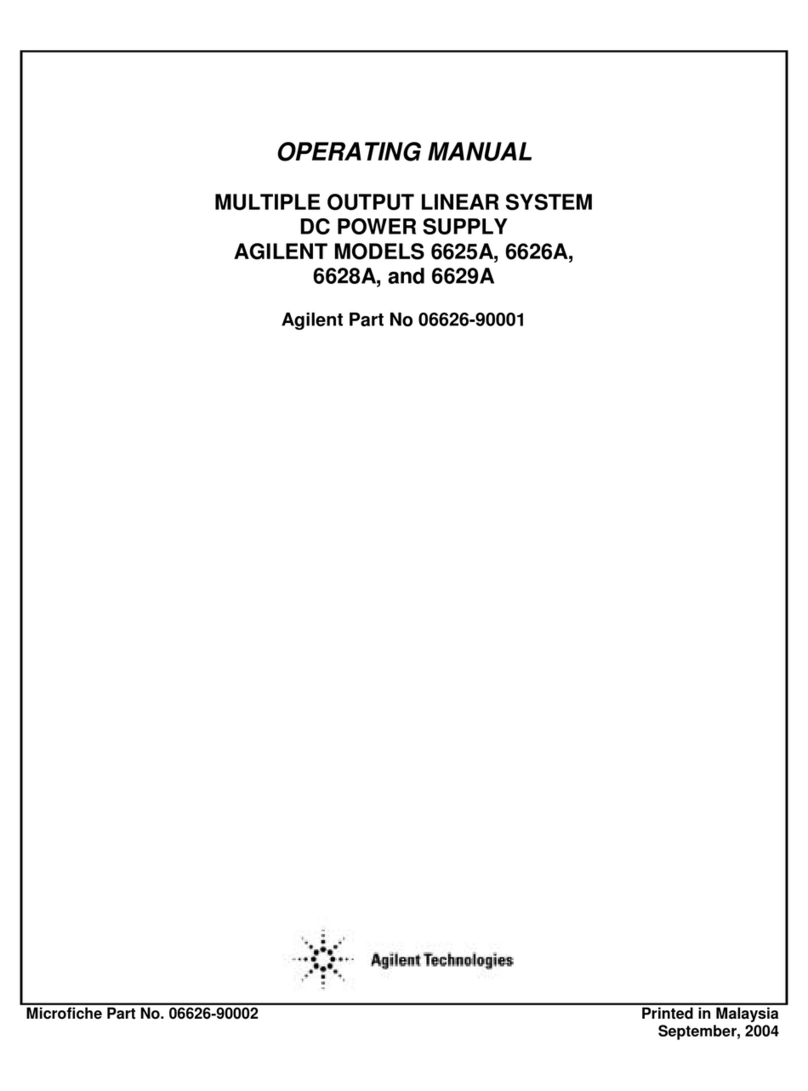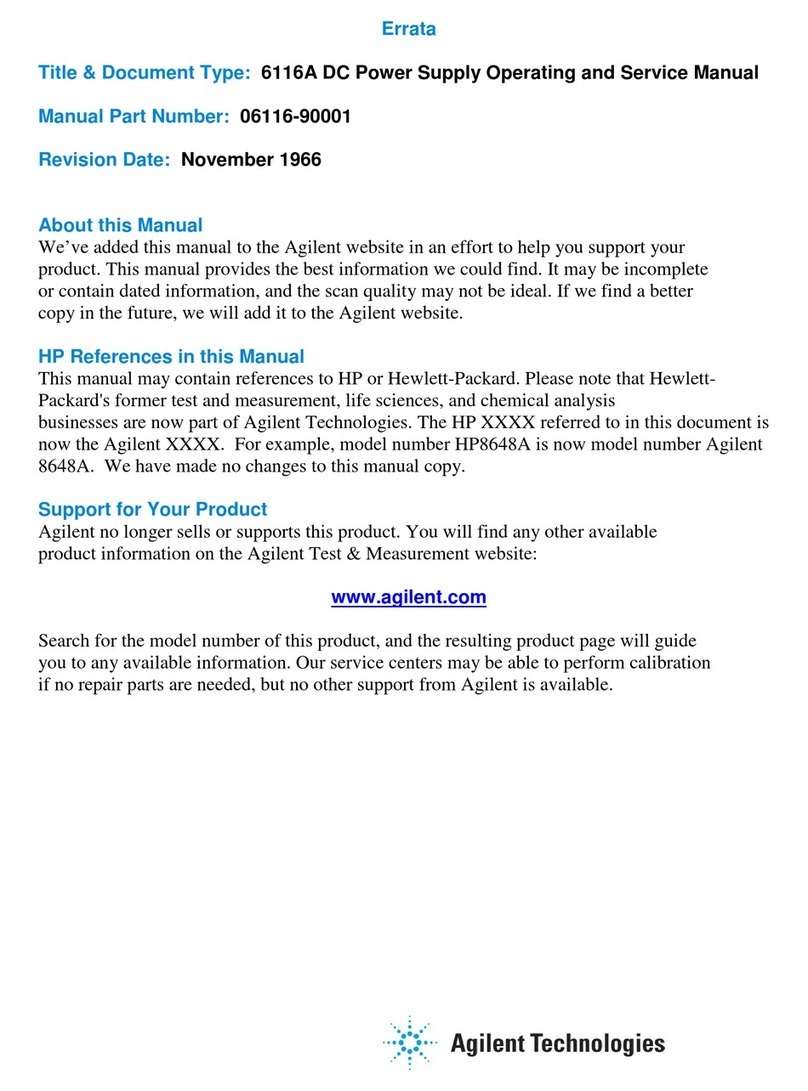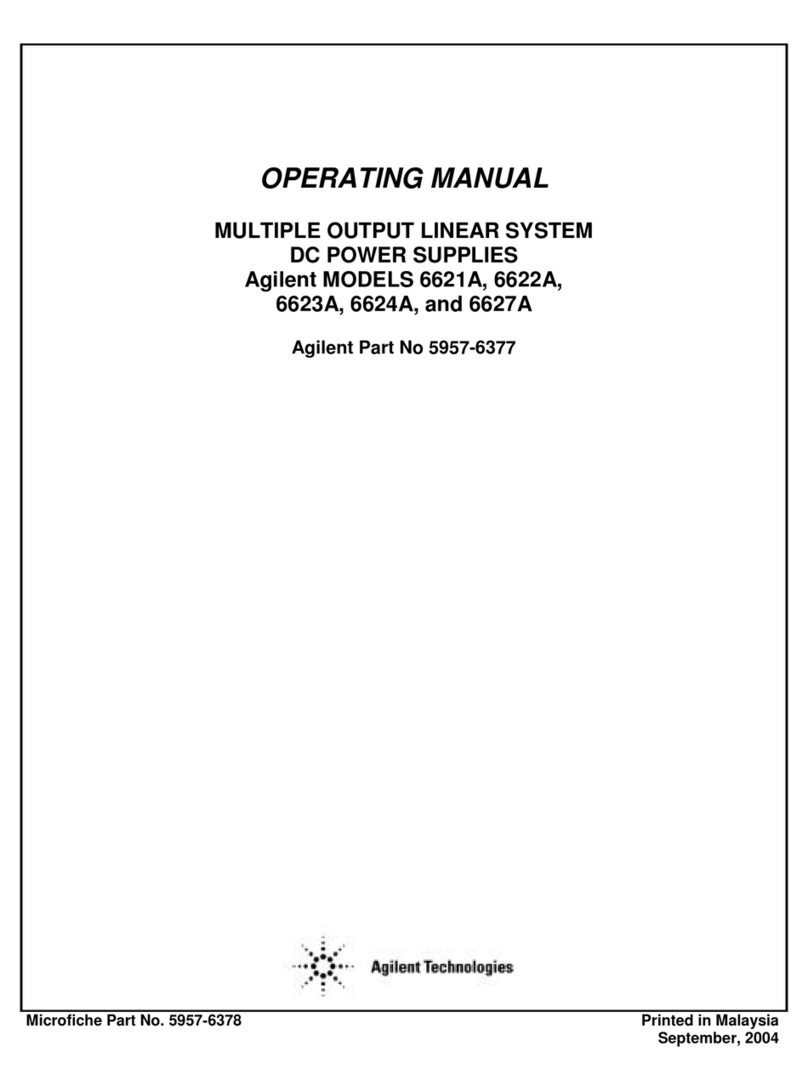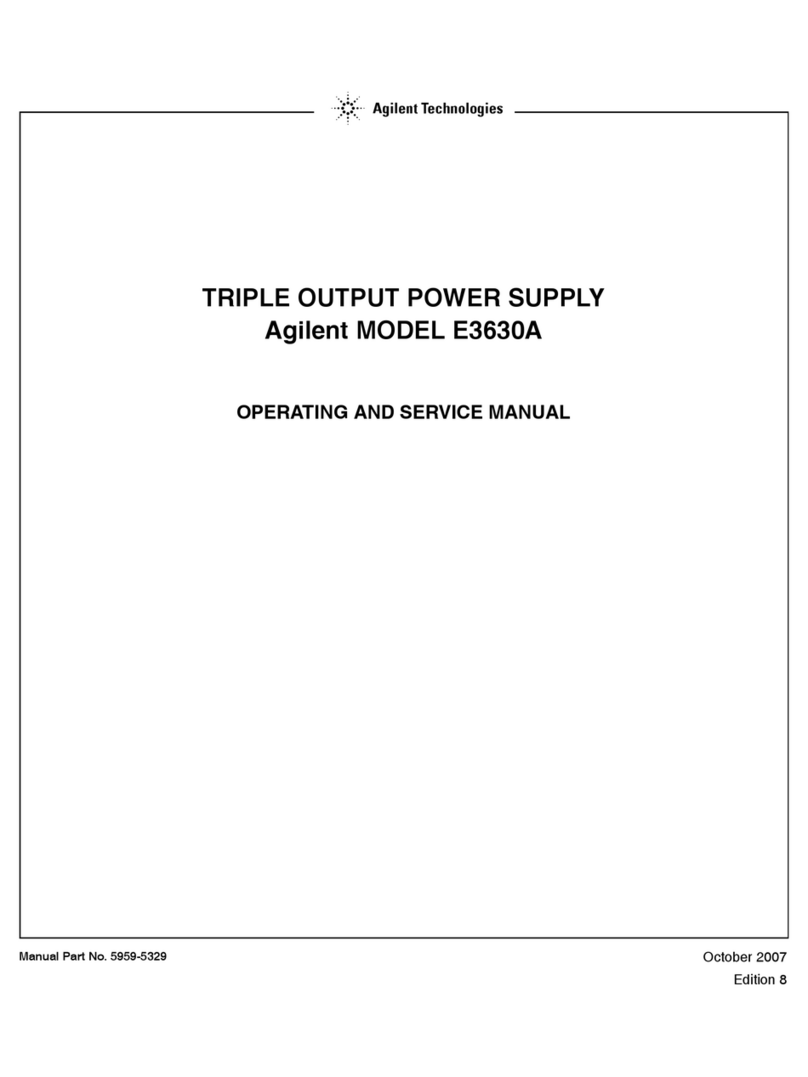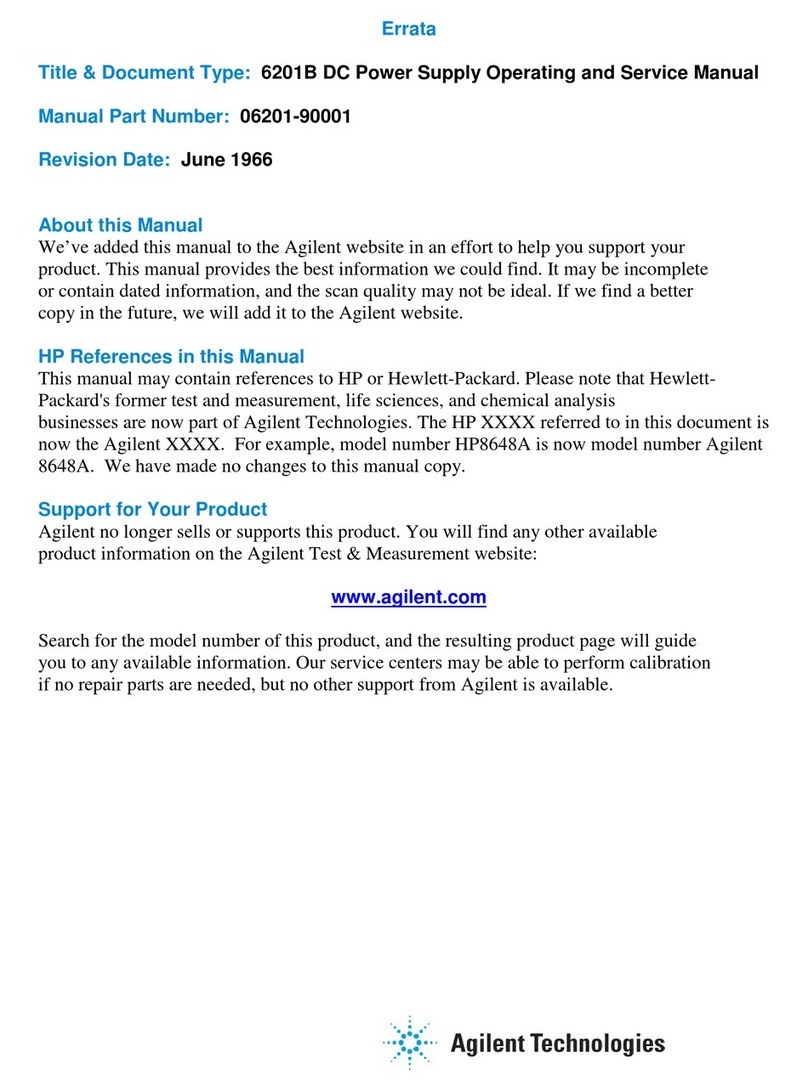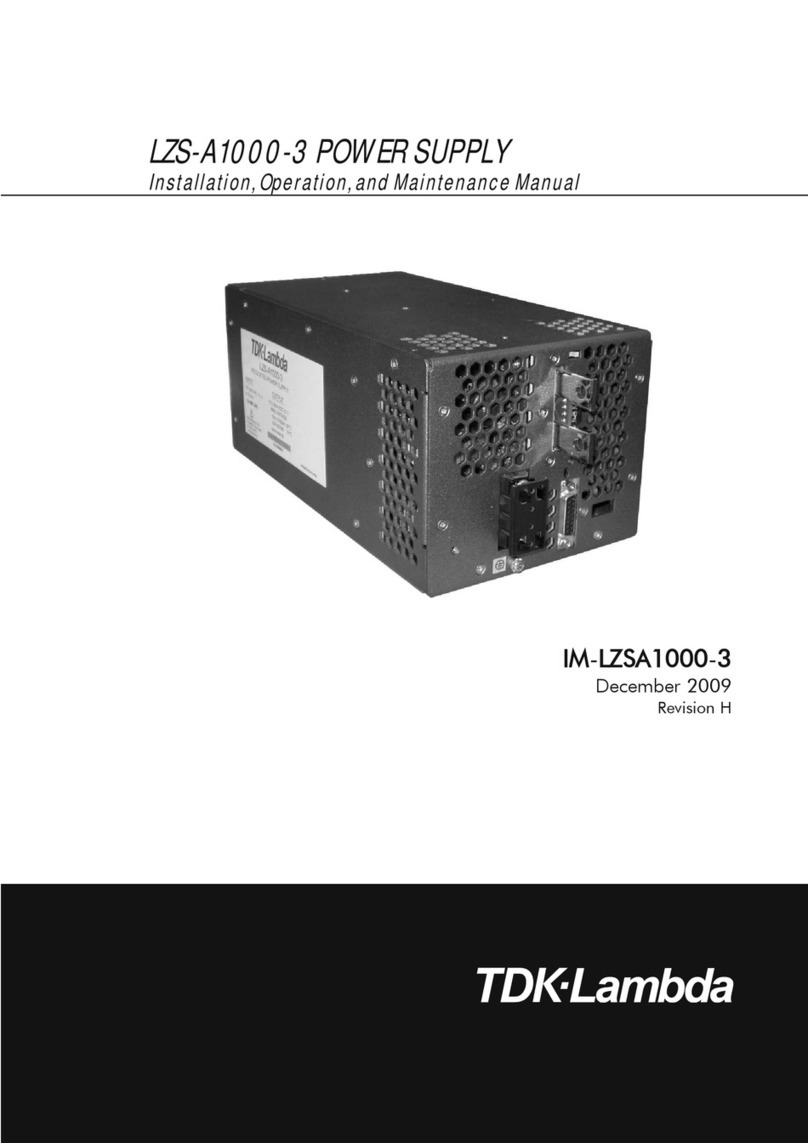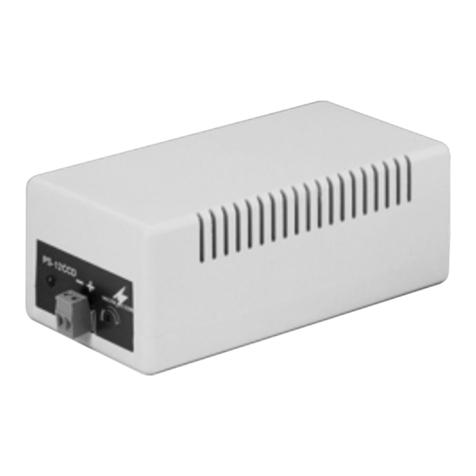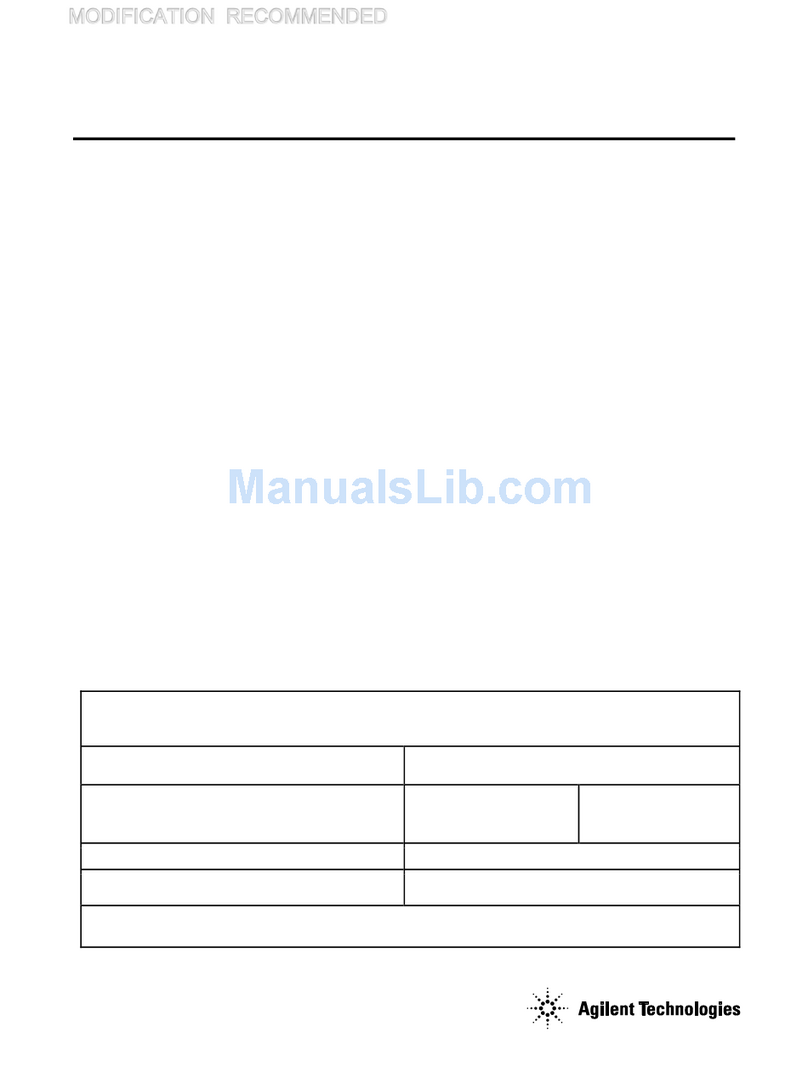
Section I
1-1 SCOPE
Wherever applicable, the service instructions given in this
manual refer to pertinent information provided in the
Operating Manual. The information in each manual covers
model 6625A, 6626A, 6628A, and 6629A. The main
differences between the models are the number and type of
outputs each model contains. These differences are specified
in each of the manuals.
The following is a listing of the information contained in this
manual with a brief description concerning its scope and
purpose.
Principles of Operation: Section II provides block diagram
level descriptions of the supply’s circuits. The GPIB
interface (digital circuits), the power control (analog and
digital circuits), and power output (analog circuits) are
described. These descriptions are intended as an aid in
troubleshooting.
Verification: Section III contains test procedures that check
the operation of the supply to ensure that it meets the
specifications given in Section I of the Operating manual.
Troubleshooting: Section IV contains board level
troubleshooting procedures to isolate a malfunction to a
defective board (GPIB or output board) or assembly (front
panel, power transformer, or cable assembly). Additional
troubleshooting procedures are provided to isolate the fault
to a defective component on the board. Board and assembly
level removal and replacement procedures are also given in
this section.
NOTE
Calibration is generally required after a repair is made.
Software calibration procedures are given in Appendix A
of the Operating Manual. After calibration is completed,
perform the applicable test(s) given in Section III of this
manual to ensure that the supply meets all specifications.
Replaceable Parts: Section V provides a listing of
replaceable parts for all electronic components and
mechanical assemblies.
Circuit Diagrams: Section VI contains functional schematics
on the functional schematics also appear on the block
diagrams in Section II. Thus, the descriptions in Section II
can be correlated with both the block diagrams and the
schematics.
Logic Symbology: Appendix A gives a brief description of
the logic symbols used on the functional schematics.
Fault Indicator (FLT) and Remote Inhibit (INH): A fault
indicator and remote inhibit circuit, which provide
additionalshutdownprotection should eitherthe GPIB
and/or controller fail, are available optionally. See a
separate document entitled, "Appendix E Option 750
Operating Instructions" for the Multiple Output Linear
System DC Power Supply Agilent Models 662xA (Agilent
P/N 5957-6372).
1-2 SAFETY CONSIDERATIONS
This product is a Safety Class 1 instrument, which means
that it is provided with a protective earth terminal. The
instrument and this manual should be reviewed for safety
markings and instructions before operation. Refer to the
Safety Summary page at the beginning of this manual for a
summary of general safety information. Safety information
for specific procedures is located at appropriate places in the
manual.
1-3 INSTRUMENT AND MANUAL
IDENTIFICATION
Agilent Techonologies instruments are identified by a two-
part Serial number, i.e. 2601A-00101. The first part of the
serial number (the prefix) is a number/letter combination
that denotes either the date of manufacture or the date of a
significant design change. It also indicates the country of
manufacture. The first two digits indicate the year (25 =
1985, 26 = 1986, etc), the second two digits indicate the week,
and “A” designates the U.S.A. The second part of the serial
number is a different sequential number assigned to each
instrument.
and component location diagrams. The names that appear
INTRODUCTION
1-1
This manual contains principles of operation, verification,
and troubleshooting information for the power supply.
Replaceable parts lists and circuit diagrams are also
provided. Installation, operation, programming, and
calibration procedures as well as detailed specifications are
given in a separate Operating Manual, Agilent Part No.
06626-90001.
Artisan Scientific - Quality Instrumentation ... Guaranteed | (888) 88-SOURCE | www.artisan-scientific.com



